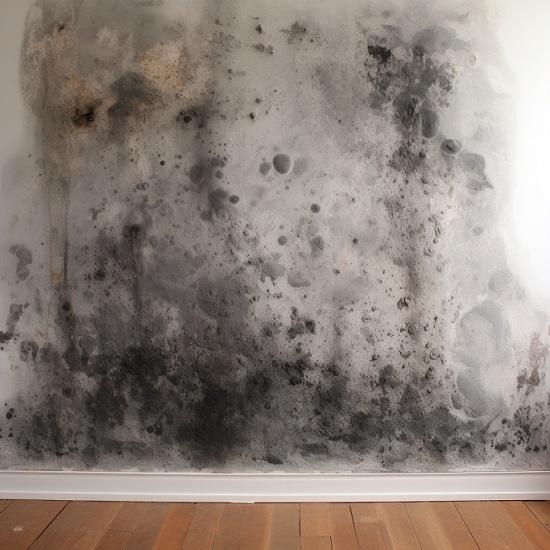Comprehensive Post Mold Remediation Procedures
Your Ultimate Guide to Post Mold And Mildew Removal Methods
Navigating the realm of post-mold removal strategies is a thorough procedure that requires focus to information and a detailed understanding of the details involved. In the results of mold and mildew invasion, understanding just how to successfully eliminate the mold and stop its reoccurrence is paramount for maintaining a healthy and balanced indoor environment. From picking the right cleansing and sanitizing methods to implementing techniques for lasting mold and mildew prevention, each action in the removal journey plays an essential role in making certain an effective result. As we start this expedition of post-mold remediation strategies, we will certainly discover the vital methods and ideal methods that can help you recover your space to its pre-mold problem and guard it against future mold dangers.
Recognizing Post-Mold Removal Process
After finishing the mold and mildew removal process, it is vital to recognize the post-mold removal strategies that are essential to ensure a reliable and detailed cleanup. Once the mold has been gotten rid of, the following step entails cleansing and decontaminating the influenced areas to stop any type of regrowth of mold. This includes making use of specialized cleaning up representatives to wipe down surfaces and eliminate any type of remaining mold spores. It is necessary to dry out the location totally to dissuade the growth of mold and mildew in the future (After mold remediation). Correct ventilation and dehumidification can help in this procedure.
Additionally, performing a final examination post-remediation is essential to guarantee that all mold and mildew has been effectively eradicated. This evaluation should entail an extensive aesthetic check along with possibly air sampling to validate the lack of mold spores airborne. Added removal may be required if the examination exposes any kind of lingering mold. Finally, educating passengers on preventative measures such as controlling wetness levels and promptly dealing with any type of water leakages can aid preserve a mold-free environment.
Efficient Cleansing and Decontaminating Techniques

Avoiding Future Mold Growth

Relevance of Proper Air Flow
Correct air flow plays a crucial duty in protecting against dampness buildup, a vital element in mold and mildew development within interior settings. Effective ventilation systems help eliminate excess humidity from the air, reducing the chances of mold and mildew spores finding the moisture they need to germinate and spread. Without ample air flow, indoor areas can become a reproduction ground for mold, resulting in possible wellness dangers and structural damage.
By making certain proper air circulation, air flow systems can additionally help in drying out moist locations quicker after water damages or flooding incidents, additionally preventing mold and mildew growth. Post investigate this site Remediation Inspection near me. Precede like bathrooms, cellars, kitchens, and attic rooms where wetness degrees tend to be greater, setting up and preserving effective ventilation systems is crucial in avoiding mold and mildew problems

Monitoring and Upkeep Tips
Provided the essential function that proper air flow plays in stopping mold development, it is vital to establish effective surveillance and upkeep ideas to guarantee the ongoing capability of air flow systems. Routine inspections of ventilation systems should be performed to look for any indications of blockages, leaks, or malfunctions that could restrain correct basics air movement. Surveillance moisture degrees within the home is additionally important, as high moisture can add to mold growth. Mounting a hygrometer can help track moisture degrees and alert homeowners to any spikes that might call for interest. Furthermore, guaranteeing that air filters are regularly cleansed or changed is essential for keeping the efficiency of the air flow system. Executing a schedule for regular maintenance jobs, such as duct cleaning and heating and cooling system evaluations, can help avoid issues before they escalate. By remaining positive and mindful to the problem of air flow systems, homeowner can effectively mitigate the threat of mold regrowth and keep a healthy interior atmosphere.
Conclusion
Finally, post-mold remediation techniques are essential for ensuring a clean and safe environment. Recognizing the procedure, implementing efficient cleansing and disinfecting approaches, avoiding future mold growth, maintaining correct ventilation, and normal surveillance are all important action in the remediation procedure. By complying with these standards, you can successfully get rid of mold and mildew and avoid its return, promoting a healthy and balanced living or working room for all owners.
In the after-effects of mold and mildew invasion, knowing how to effectively get rid of the mold and prevent its reoccurrence is paramount for preserving a healthy interior atmosphere. When the mold has been removed, the next step entails cleaning and decontaminating the impacted areas to avoid any regrowth of mold - Post Remediation Inspection near me. After getting rid of noticeable mold growth, it is crucial to cleanse all surfaces in the affected area to get rid of any type of remaining mold spores. To even more enhance mold and mildew avoidance actions, it is necessary to attend to underlying issues that initially led to mold and mildew growth.Given the essential function that correct air flow plays in preventing mold growth, it is critical to establish efficient tracking and upkeep suggestions to guarantee the ongoing functionality of ventilation systems